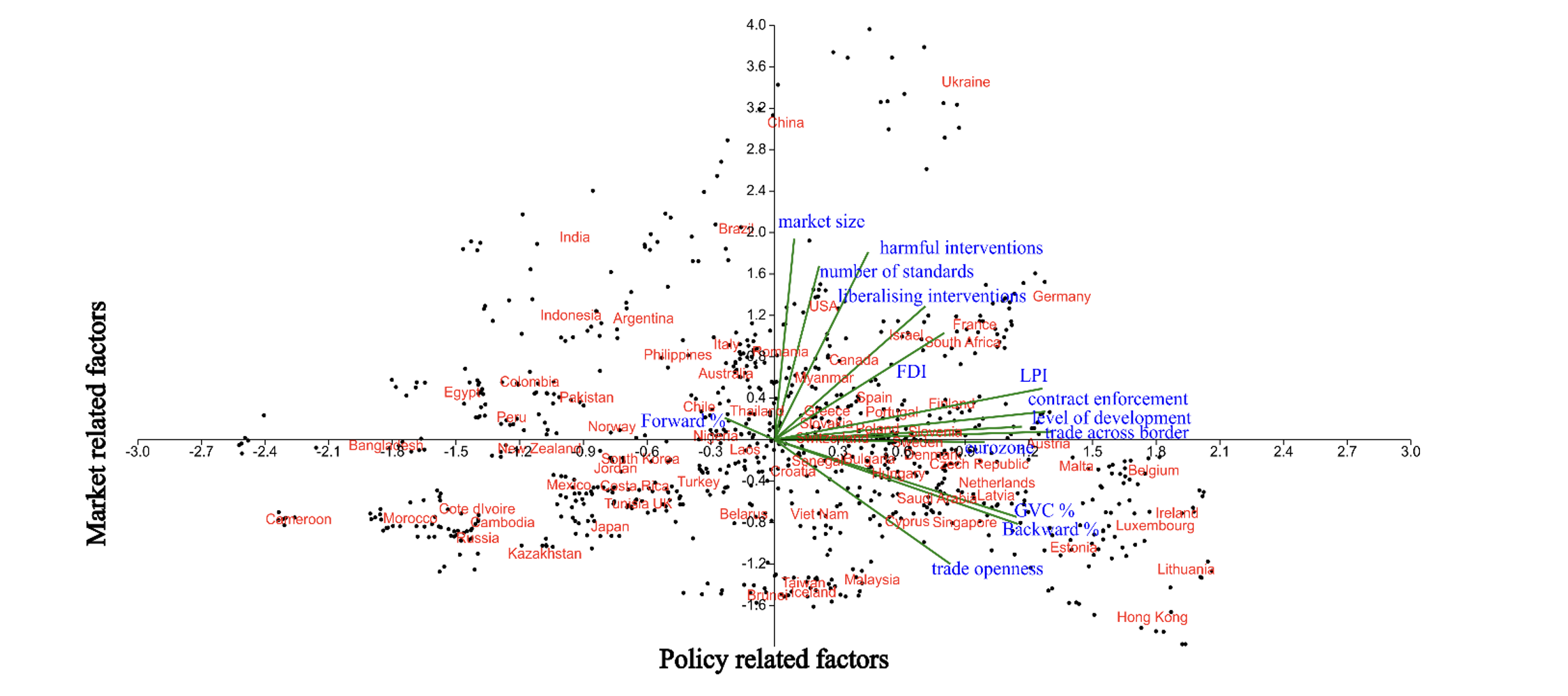Attila Jambor, Jeremias Balogh, Sandor Kovacs, Zalan Maro, Aron Torok
GVC participation plays a crucial role in economic development as the ability of countries to prosper highly depends on their level of participation in the global economy. Even small countries with limited resources can benefit from global trade through GVC participation with significant variation across countries and sectors. As evident from the majority of the existing literature in the field, GVC participation represent a perfect opportunity for supporting local agri-food markets to become more commercialised and productive, thereby increasing local incomes as well as their stability together with food security. It is also evident that agricultural sectors participate in value chains predominantly as suppliers of raw materials, whereas food sectors participate mainly in terms of sourcing inputs from global markets.
At the same time, many poorer countries faced serious challenges in integrating to these GVCs for a number of reasons, including low educated human capital, poor infrastructures, low capital endowments, versatile political and business climates or poor institutions. For local and regional as well as global policymakers, the question is therefore what the key determinants of developing countries in GVC participation are and how can targeted policies help fostering better integration.
Deliverable 1.5. of the TRADE4SD project provides an empirical analysis of the determinants of agri-food GVC participation of countries standing at different levels of economic development, especially focusing on developing countries. This analysis is particularly relevant for developing countries helping them to better understand the overall context and the key determinants of success and thereby increasing their involvement in global agri-food GVCs.
The report makes it clear what the key determinants are of GVC participation by (1) analysing simple correlation statistics; (2) by running econometric models for all countries and (3) by identifying determinants by engagement. Overall, our results suggest that structural characteristics of the countries are the key determinants of GVC participation and that market and trade policy related determinants drive engagement in forward and backward GVC participation. The most important determinants are as follows.
- Trade openness: Trade openness proved to be one of the most important factors in GVC participation in all models and by all means (backward and foreward types as well). Opening borders and actively trading with other countries should be a key policy for countries aiming to increase their GVC participation levels.
- Level of economic development: As expected, the general level of economic development definitely plays a role in enhancing GVC participation at all levels and especially for backward participation. Developed countries are most active in GVCs than developing ones. Economic policies aimed to improving economic development is also beneficial for better GVC integration.
- Logistics performance: The quality and speed of logistics activities appear to be major determinants of GVC participation, especially for forward participation. Economic policies should focus on investing in logistics infrastructure.
- Ease of doing business: The ease of doing business was proven to be another key factor in all terms of GVC participation – governments should focus on providing a conducive business environment.
- Eurozone membership: Being part of a common market with a common currency definitely fosters GVC participation, especially backward participation.
- Market size: Market size per se does not seem to play a major role in boosting GVC participation – countries with smaller markets can also be important beneficiaries of global economic integration.
- Trade interventions: Liberal trade interventions play some role in enhancing GVC participation, though this does not seem to be the most important factor. Trade intervention policies seem to play a limited role in GVC participation growth.
On the whole, it seems that market related factors are more important than trade policy related factors in pursuing GVC participation, at least in agri-food markets. Future policies in pursuing higher GVC participation should take these results into account.
Figure 1. PCA biplot of the studied factors and countries
Source: own composition based on OECD (2023) data.
High engagement countries |
Average engagement | Low engagement countries |
| Austria, Belgium, Czech Republic, Denmark, Estonia, Finland, France, Germany, Hong Kong, Ireland, Latvia, Lithuania, Luxembourg, Malta, Netherlands, Saudi Arabia, Singapore | Argentina, Australia, Belarus, Brazil, Brunei, Bulgaria, Canada, Chile, China, Costa Rica,
Croatia, Cyprus, Greece, Hungary, Iceland, Israel, Italy, Japan, Jordan, Kazakhstan, Laos, Malaysia, Myanmar, Nigeria, Norway, Philippines, Poland, Portugal, Romania, Senegal, Slovakia, Slovenia, South Africa, South Korea, Spain, Sweden, Switzerland, Taiwan, Thailand, Tunisia, Turkey, UK, Ukraine, USA, Vietnam |
Bangladesh, Cambodia, Cameroon, Colombia, Cote d’Ivoire, Egypt, India, Indonesia, Kazakhstan, Morocco, Mexico, New Zealand, Pakistan, Peru, Russia |
Table 1. Categorisation of agri-food GVC participation engagement by country
Source: own composition based on OECD (2023) data



Leave a Reply